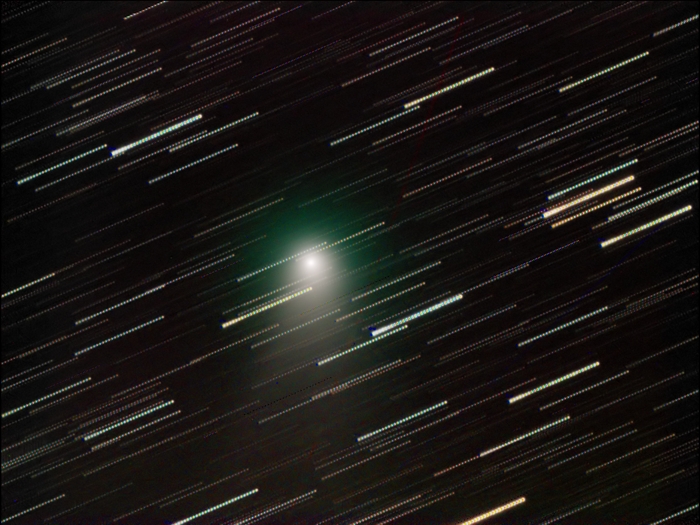
These travelling masses of ice and dust galloping throughout the universe are believed to have shaped the course of life
on this planet. As a result of comet-hunting, many deep-sky objects including nebulae and galaxies have been discovered
with perhaps the most obvious collection being the 109 (or 110) DSO's attributed to Charles Messier. With over 1000 comets
now having been catalogued and approximately 200 having been established as being periodic, historical records suggest
comets to have been observed and documented as far back as 240 BC (Comet Halley by the Chinese).
Comets are appealing to amateurs for a variety of reasons: they lead to incredible photographs thanks to their glowing and
colourful tails extending millions of kilometers as they approach the sun and the ice and various frozen gases in the nucleus
begin to vaporize; they are the precursors of meteor showers as remnants left behind on prior visits are encountered by our
planet while we orbit the sun; and they represent an active adventure and form the basis of a "culture" (comet hunters) based
on the discovery of new comets during the early dawn hours on the eastern horizon or just after sunset on the western horizon.
Note: Comet C/2009 P1 (Garradd) illustrated below while passing through the constellation of
Pegasus and within the immediate vicinity of the globular cluster M15 was discovered on Aug 13, 2009 by Siding Spring
Observatory astronomer Gordon J. Garradd on four plates and was estimated to be between magnitude 17.5 to 17.7 at the time.
Continuous monitoring has revealed a continuous brightening of the nucleus and which is now expected to reach mag 7.1 by the
end of February, 2012. Perihelion has been estimated to be Dec 23, 2011 at a distance of 1.55 AU while perigee is believed to
be on March 5, 2012 at 1.27 AU.
For an ephemeris and orbital elements on this hyperbolic comet from Harvard's Minor Planet Center, click
here. For a simulation
of the comet including various orbital elements and physical parameters, click
here.
|
Comet: C/2009 P1 (Garradd) Discoverer: Gordon J. Garradd Aug 13, 2009 Type: Hyperbolic Period: N/A Constellation: Pegasus RA / Dec: 21h 46m 15s / 11° 15' 34" Distance: 237.4 million km Magnitude: 9.2 |

|
Date: July 29, 2011 02:00 - 04:25 UT+3 Location: Athens, Greece Equipment: AP 305/f3.8 Riccardi-Honders AP 1200GTO GEM SBIG ST-2000XM SBIG CFW-8A SBIG LRGB filters Integrations:
Image Scale: 1.36" / pixel Temperatures:
Software: CCDSoft V5.00.201 CCDStack V1.6.0.5 eXcalibrator V1.0.3.0 Aladin V6 Photoshop CS2 |